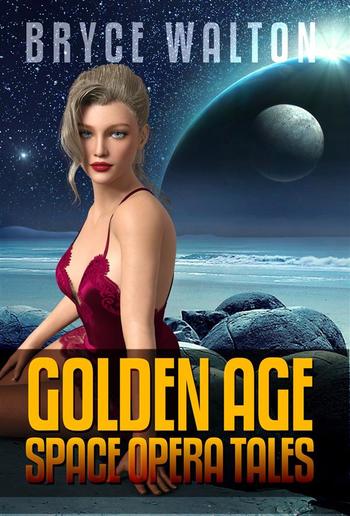
S. H. Marpel - Bryce Walton: Golden Age Space Opera Tales
Bryce Walton: Golden Age Space Opera Tales
S. H. Marpel, Various
Description
Bryce Walton (May 31, 1918 – February 5, 1988) was an American pulp fiction writer. In 1945, he began a career as a freelance writer. He was credited as a writer for the TV serial Captain Video and His Video Rangers. He wrote three episodes of Alfred Hitchcock Presents, and two of his stories were adopted for the series, including "The Greatest Monster of Them All".
Space Opera is a subgenre of science fiction that emphasizes space warfare, melodramatic adventure, interplanetary battles, chivalric romance, and risk-taking. Set mainly or entirely in outer space, it usually involves conflict between opponents possessing advanced abilities, futuristic weapons, and other sophisticated technology.
The term has no relation to music, as in a traditional opera, but is instead a play on the terms "soap opera", a melodramatic television series, and "horse opera", which was coined during the 1930s to indicate a formulaic Western movie. Space operas emerged in the 1930s and continue to be produced in literature, film, comics, television, and video games.
The Golden Age of Pulp Magazine Fiction derives from pulp magazines (often referred to as "the pulps") as they were inexpensive fiction magazines that were published from 1896 to the late 1950s. The term pulp derives from the cheap wood pulp paper on which the magazines were printed. In contrast, magazines printed on higher-quality paper were called "glossies" or "slicks".
The pulps gave rise to the term pulp fiction. Pulps were the successors to the penny dreadfuls, dime novels, and short-fiction magazines of the 19th century. Although many writers wrote for pulps, the magazines were proving grounds for those authors like Robert Heinlein, Louis LaMour, "Max Brand", Ray Bradbury, Philip K. Dick, and many others. The best writers moved onto longer fiction required by paperback publishers. Many of these authors have never been out of print, even long after their passing.
Anthology containing:
In His Image
Savage Galahad
The Ultimate World
Last Call
Mary Anonymous
The Last Laugh
Thy Name Is Woman
Prisoner of the Brain-Mistress
Princess of Chaos
Martian Nightmare
Scroll Up and Get Your Copy Now.

